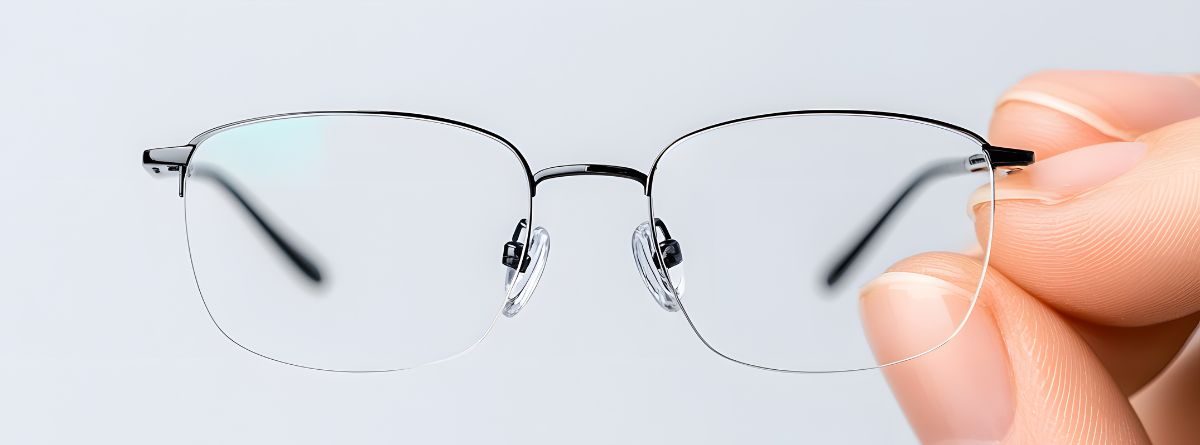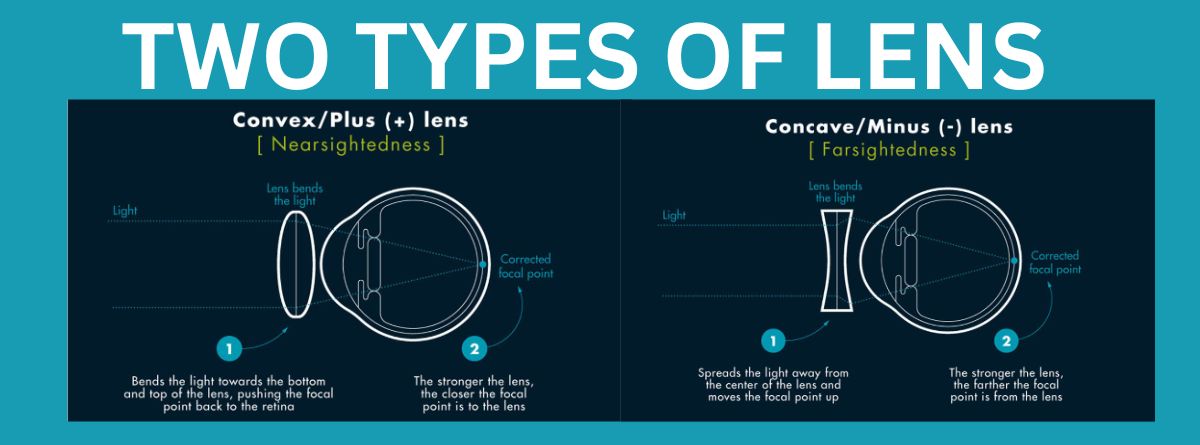
If you’ve ever been told your prescription is “too strong” for stylish frames—or lived with thick, heavy lenses that distort how your eyes look—then high index lenses might be the upgrade you didn’t know you needed.
Modern high index lenses are made from advanced materials that bend light more efficiently. This lets them deliver the same vision correction as standard lenses, but in a thinner, flatter, and lighter form. For people with stronger prescriptions, that can mean a huge cosmetic and comfort boost—say goodbye to the “Coke-bottle” look.
How Eyeglasses Work to Bend Light
To understand high index lenses, we need to explain how lenses bend light.

Glasses work by redirecting light so it lands precisely on the retina. Nearsighted prescriptions bend light less (negative diopters), while farsighted prescriptions bend light more (positive diopters). The stronger your prescription, the more light bending—and material—is needed.
Why Are High Index Lenses Thinner?
It all comes down to how lenses bend light.
High index lens materials have a higher index of refraction, meaning they can bend light more with less material. The result? Thinner, lighter lenses, even for high prescriptions.
- Standard plastic lenses: Index ~1.50
- High index options: 1.60, 1.67, and up to 1.74
- The higher the number, the thinner the lens.
How Much Thinner Are High Index Lenses?
Compared to standard plastic lenses (CR-39):
- 1.60 high index lenses are about 20% thinner
- 1.67 lenses are about 30% thinner
- 1.74 lenses can be up to 50% thinner
This makes them ideal for reducing bulky edges and lens bulge in strong prescriptions—especially if you're nearsighted.
How Much Lighter Are High Index Lenses?
While the reduction in weight varies by frame style and lens type, high index materials are generally 10% to 20% lighter than standard plastic lenses. The exact weight difference depends on lens thickness, diameter, and coatings, but the difference is noticeable for people with strong prescriptions who wear their glasses all day.
Aspheric Lenses: A Key Design Feature
Many high index lenses also come in an aspheric design, meaning the curve of the lens gradually changes from center to edge. This flattens the lens profile, helping reduce eye distortion (like tiny or enlarged eyes) caused by strong prescriptions.
Aspheric high index lenses are:
- More cosmetically appealing
- Less bulky
- Better for larger frame styles
Beyond being thinner, high index glasses look more natural on your face. The lenses bulge less, magnify or minify your eyes less, and sit closer to your face—all of which improve both function and appearance.
Benefits of High Index Lenses
If you’re still rocking traditional plastic or glass lenses, consider what high index lenses can offer:
- Up to 50% thinner than standard lenses
- Lightweight for all-day comfort
- Reduce the “magnified” or “shrunken eyes” effect
- Compatible with most frame styles
- Block 100% of UV rays
- Can be tinted for sunglasses or aesthetic purposes
- Safer and more shatter-resistant than regular glass
Add an anti-reflective (AR) coating and you’ll get sharper, cleaner vision with less glare, ideal for driving, screens, and night vision.
Cost of High Index Lenses
High index lenses cost more than standard lenses due to the advanced materials and technology involved in their production. On average:
1.60 high index lenses add around $80–$120 to a base lens cost
1.67–1.74 lenses can add $180 or more, especially when then adding AR coating or photochromic tint which both have their own additional cost
However, for people with moderate to high prescriptions, the comfort, aesthetic, and optical improvements often justify the extra cost.
Who Should Choose High Index Lenses?
- Anyone with a moderate to strong prescription (usually ±3.00 or higher)
- People who want lighter, better-looking glasses
- Those who wear glasses all day and need comfort and durability
- Anyone looking to ditch the outdated look of thick lens edges
FAQ: High Index Lenses Explained
What does high index mean for glasses?
It refers to lens materials that bend light more efficiently, allowing them to be thinner and lighter while delivering the same prescription strength.
How thin can high index lenses get?
Depending on the index (1.60 to 1.74), they can be up to 50% thinner than standard lenses.
Are high index lenses thinner than polycarbonate lenses?
Yes. High index lenses—especially at 1.67 and 1.74—are thinner than polycarbonate. However, polycarbonate is more impact-resistant, making it ideal for kids and sports.
Can high index lenses be tinted?
Absolutely. They can be tinted like standard lenses and also come in photochromic (light-responsive) options.
High index glass lenses are a smart upgrade for anyone looking to combine strong vision correction with sleek design and all-day comfort. If you’re tired of bulky lenses or limited frame options, these modern materials deliver performance without compromise. Talk to your eye doctor to find the best high index lens for your prescription and lifestyle.
References
- All About Vision – High Index Lenses (https://www.allaboutvision.com/eyewear/eyeglasses/lenses/high-index/)
- Optometrists.org – Guide to High Index Lenses (https://www.optometrists.org/general-practice-optometry/optical/guide-to-optical-lenses/guide-to-high-index-lenses/)
- University of Optometry San Diego – High Index Lenses (https://www.uoosd.com/high-index-lenses)
- Infogrades.org - How Do Eyeglasses Work? Infographic (https://www.infogrades.com/arts-infographics/how-do-eyeglasses-work/)


